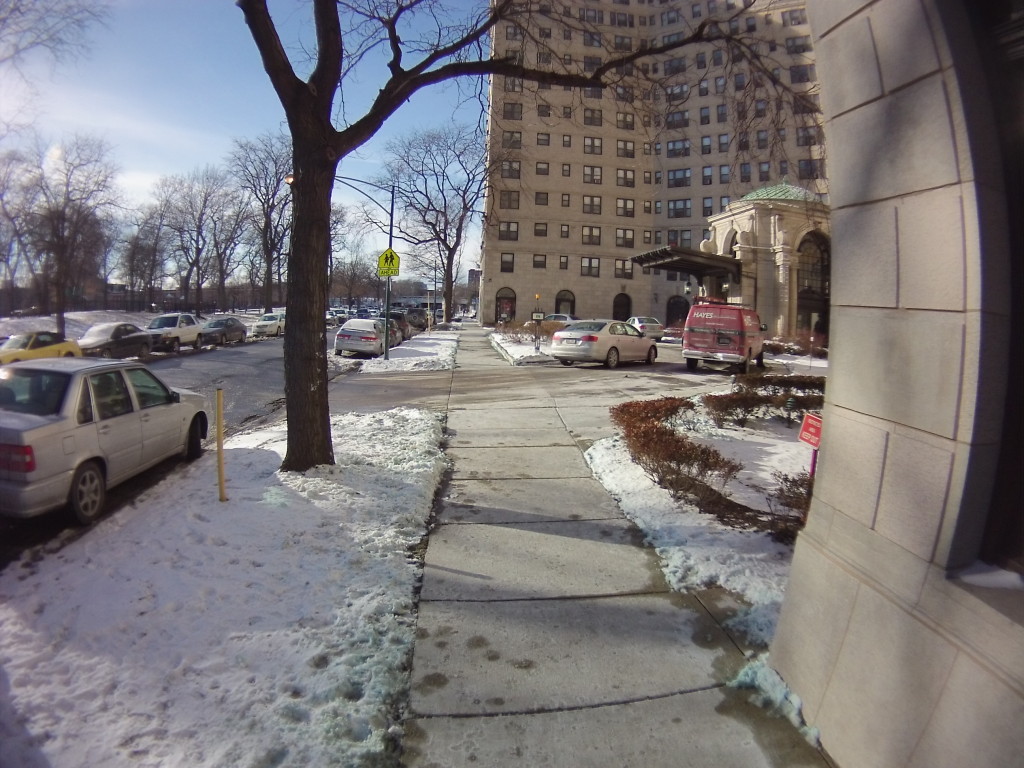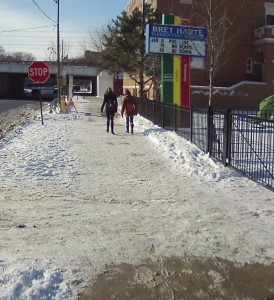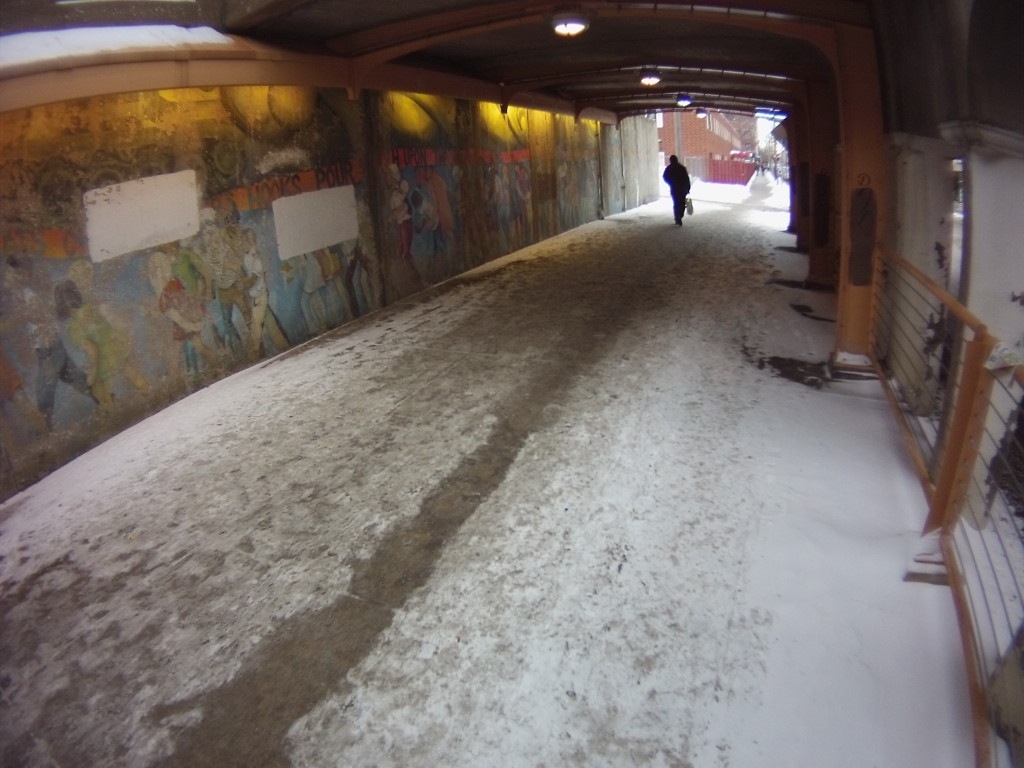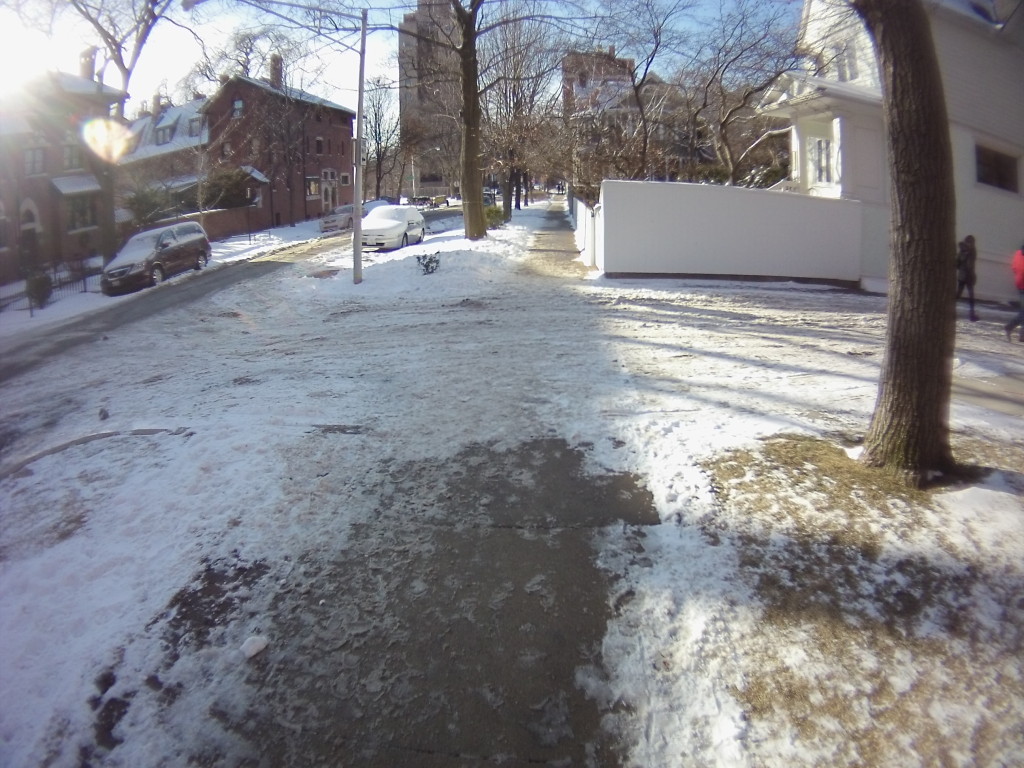Snow wreaks havoc with transportation. Entire fleets of plows keep roadways clear and airports open. Most snowy cities in North America, including Chicago, require residents to clear the sidewalks in front of their homes and businesses. There are many more linear feet of sidewalks than there are roads in the city and they are thus more expensive and slower for city workers to clear. In Chicago, compliance with the sidewalk clearing bylaw is low.
On a walk through Hyde Park earlier today, I noted 80% compliance (23 out of 31) with the snow removal bylaw from businesses, rental buildings, and multi-floor condominiums, and less than 30% compliance (20 out of 73) from private residences. I considered a sidewalk cleared of snow if there was no packed snow. I allowed loose snow carried or blown in.
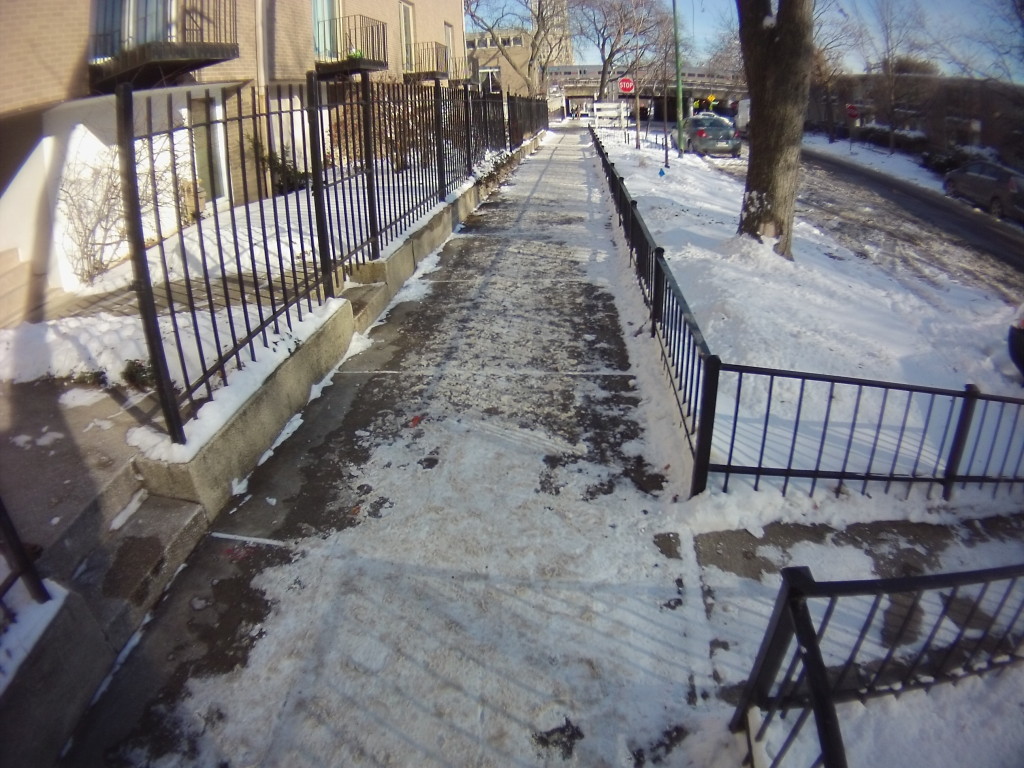
I considered the sidewalk in the middle of this image cleared. Packed snow on either side of this segment was not considered cleared.
As pedestrian traffic is high throughout Hyde Park, each failure to clear a sidewalk places many people at risk of injury and making it difficult to travel. The Windermere apartments provide a positive example having done a wonderful job keeping their sidewalks clear.
While some private residences had shoveled or hired someone to do snow removal, many efforts have failed to remove packed snow, especially on busy routes or have attempted to remove large amounts of snow solely with salt.
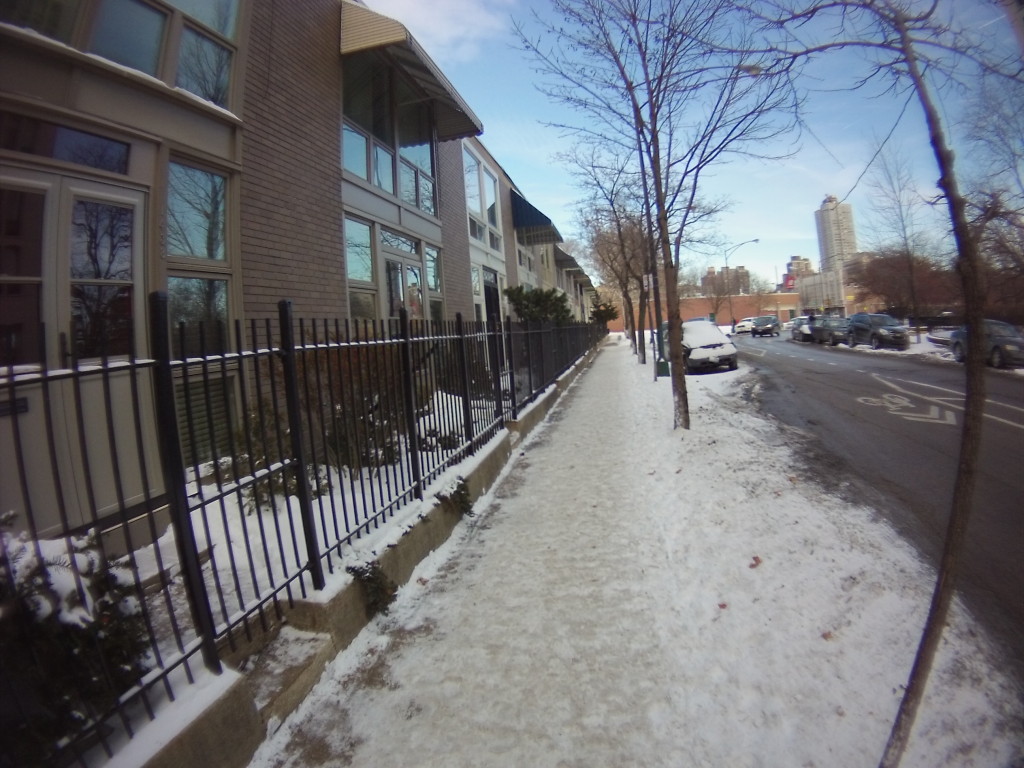
Poorly shoveled snow on 55th St. east of Blackstone. Salt has melted some snow along the left edge of the sidewalk. This is one of the busiest walking routes in Hyde Park.
Often, driveways were cleared better than the sidewalks.
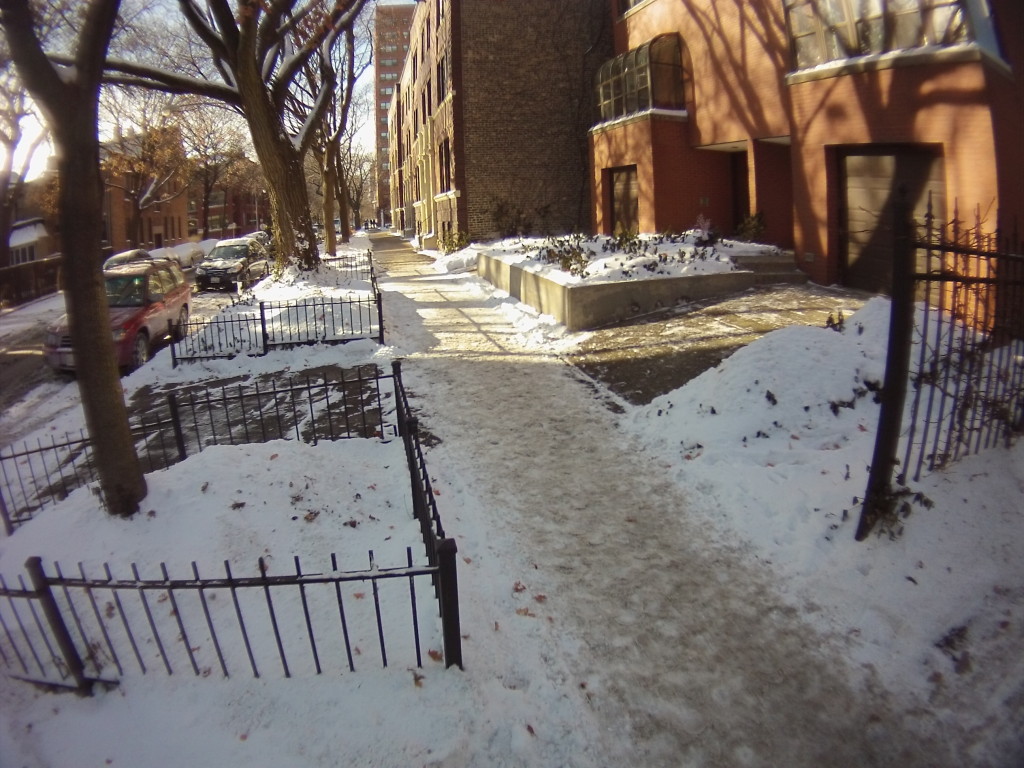
Snow has been cleared on the driveway here, but not the sidewalk. The snow seems to have been packed down before shoveling occurred. UPDATE: This sidewalk was cleared the day after this post was published.
The worst snow on sidewalks is on city owned properties. At schools, underpasses, small parks, pedestrian islands, and alleyways, snow remains uncleared.
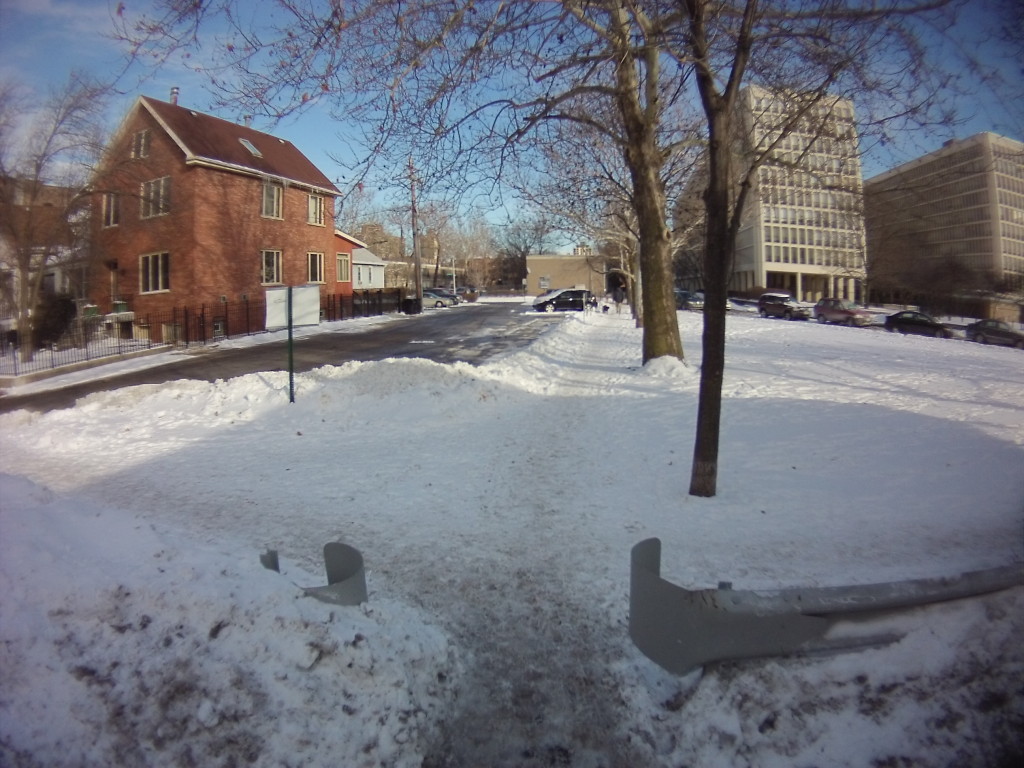
A trampled path through one of four parcels of Chicago Park District land surrounding the University Park Apartments on 55th St.
These locations will become icy in the coming days as temperatures warm up and feet continue to pack the snow. CDOT is aware of these issues and their responsibility to clear snow, but have not yet developed a plan to clear the sidewalks.
Some factors increase the likelihood that a sidewalk would be cleared. Most importantly, if a property has maintenance staff or can contract out snow clearance, snow removal is generally rapid and of high quality. If other sidewalks are well cleared on the same block, private residents are more likely to fully clear their segment. Compliance is low for vacant buildings and single-story condo owners, many of who have less than 20′ of sidewalk to clear.
The City of Chicago has two campaigns to match volunteers with sidewalks in need of clearance: the underused Adopt-a-Sidewalk website and the Snow Corps. Both programs require volunteers to own their own snow clearing equipment and supplies. Many potential volunteers in the most pedestrian friendly areas on the city live in apartment buildings, including myself, and thus have no need to own snow clearing equipment. This year, the city is also seeking nominations to recognize businesses and organizations that do a superb job keeping sidewalks clear. The Active Transport Alliance also has a flier campaign to encourage sidewalk clearing.
While many programs encourage sidewalk clearing, enforcement of the bylaw is sparse. Through 311, citizens can report uncleared sidewalks and have an inspector talk to the building owner or manager. As not everyone is physically capable of clearing snow and cannot afford to hire someone, strict enforcement with a $50 dollar fine has been politically discouraged. While some hardship situations may be responsible uncleared sidewalks, today I had found many properties where an effort was made to clear snow somewhere, but the public sidewalks remained snowy.

